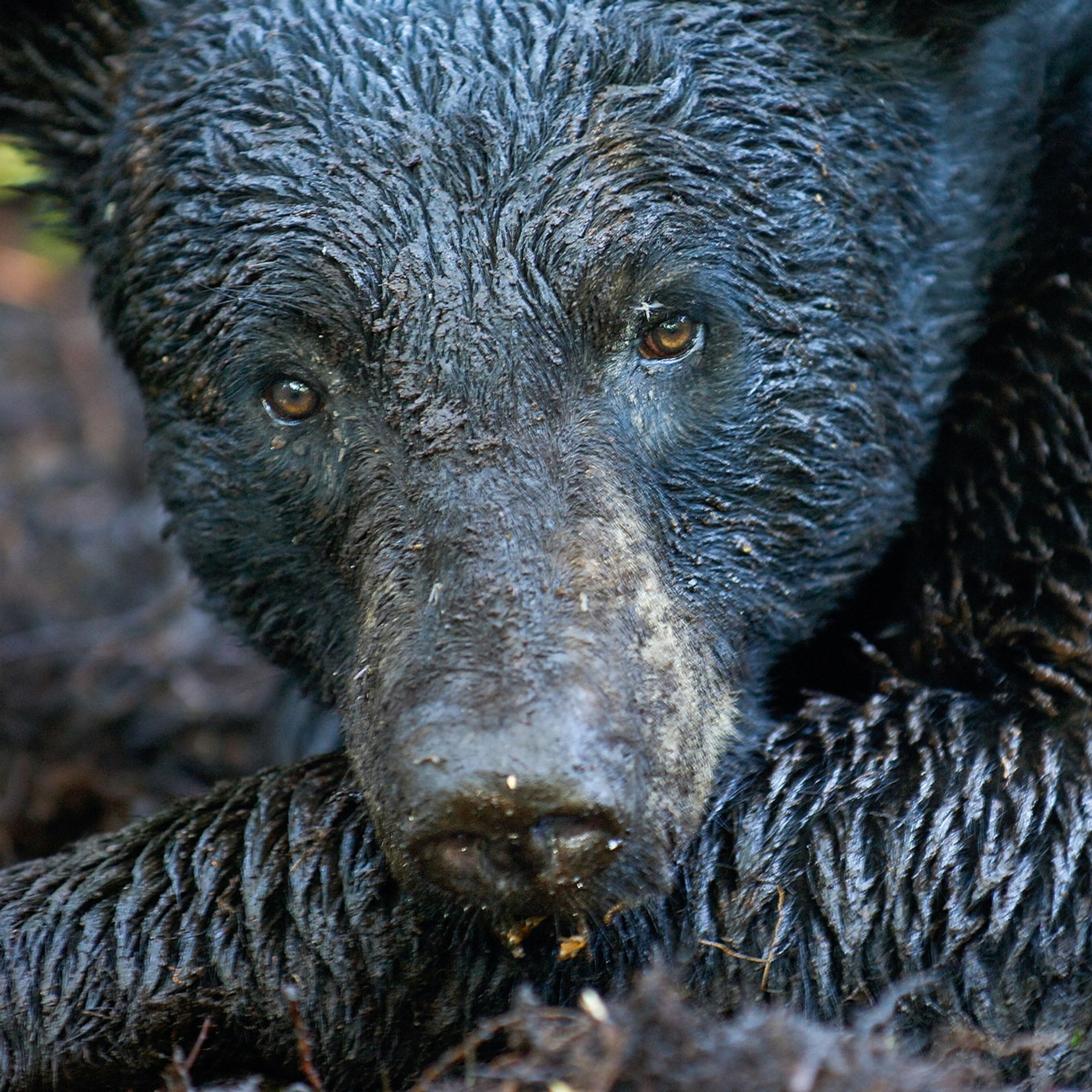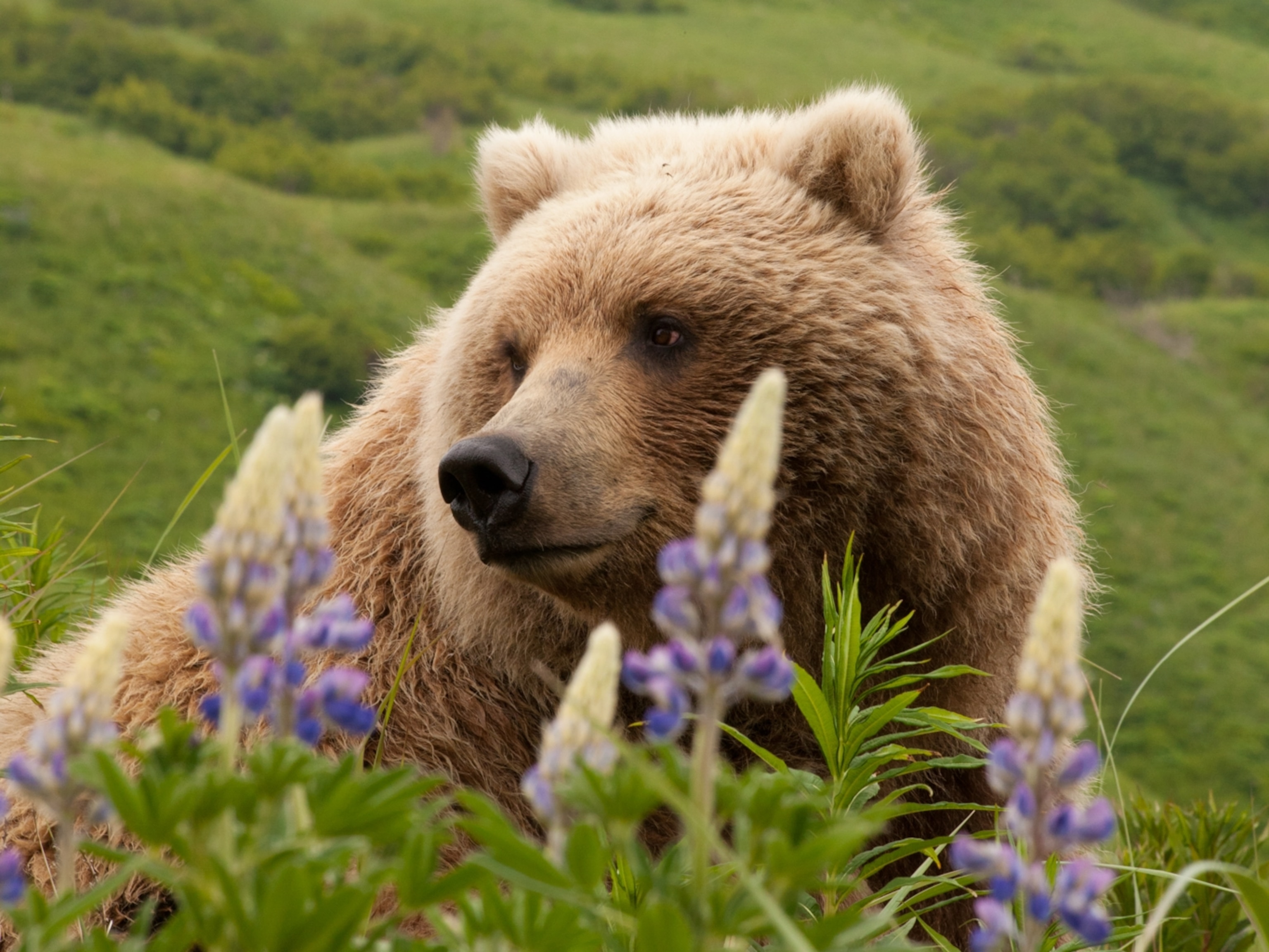
Black Bears Can "Count" as Well as Primates
Do black bears count in the woods? Possibly, according to a recent study that shows the mammals are as smart as primates.
Do black bears count in the woods? Possibly, according to a recent study that shows the mammals are as smart as primates.
In experiments, captive bears showed that they could perform numerical tasks, including distinguishing the number of dots on an image.
Even though bears have the largest relative brain size of any carnivore (still not as big as primates), surprisingly little research has been done on their cognitive abilities, according to the study. (Read "Animal Minds" in National Geographic magazine.)
The new research shows for the first time that "bears and other animals that have been neglected by cognitive scientists ... may show abilities similar to species more like humans," study co-author Jennifer Vonk, a comparative psychologist at the University of Oakland in Rochester, Michigan, said by email.
Will Work for Food
For the experiment, three black bears in their enclosure in Alabama's Mobile Zoo were given the opportunity to approach a touch-screen computer on a rolling cart. The large carnivores, which are generally "motivated to work for food," proved willing participants, Vonk said.
When a bear walked up to the computer, the screen flashed two images—for instance, a set of large dots and a set of small dots, which were both randomly colored black or red. Each bear was already trained to touch the computer with its nose or paw, and would do this to choose an image, according to the study, published in June in the journal Animal Behaviour.
If the bear touched the "correct" category—randomly determined by the scientists—the computer beeped melodically and the animal got a food reward. If the bear touched the incorrect category, the computer buzzed and the next pair of images was shown.
To show if the bear had learned what image was correct (say, a high or low number of dots), the scientists showed them a new set of images that were of the same type as the previous ones.
The results showed all the bears were able to choose the correct image that got them food. It set the stage to look closer at their ability to "count."
(See National Geographic's bear videos.)
"Counting" Bear
A further experiment discovered that one bear, named Brutus, could also discriminate numbers.
Brutus was shown two images—one with a set of large dots and another with a set of small dots. This was followed by another two images, in each of which the dots were moving and placed on a background of a different size than the previous images.
The bear still chose the correct image despite these "conflicting cues," suggesting he can "count" the dots to distinguish the one to get him a treat, Vonk said. (Watch video: "Smart Animals.")
Even so, "it's too early to call it counting per se," she noted.
Because the task was voluntary, Vonk struggled with the bears all trying to participate at once—knowing a treat was imminent. "The hardest part was giving only one access to the screen," she said. (See bear pictures.)
Dave Garshelis, who was not involved in the study but serves as bear project leader at the Minnesota Department of Natural Resources, said that the bears may have found it relatively easy to respond to the color of the dots because they resemble berries, one of the black bear's main food sources.
For instance, black bears are able to discern the preferred ripe blackberries—which are black—from unripe blackberries, which are red.
He also added that the experiment was geared toward visual acuity—the most comfortable sense for humans, but not so much for bears, whose sense of smell is a thousand times greater than a person's.
In the experiment, "you've actually stripped them of their main sense that they make decisions by, which is their sense of smell," he said.
Garshelis suspects the bears would have performed even better on the tests if there'd been smells emanating from the screen.
Bears Evolved Smarts to Find Food?
It makes sense that bears would be smart—as loner omnivores, the animals must problem solve to root out a variety of food sources, the authors noted.
(See "Fish as Good as College Students in Numbers Test.")
Garshelis agreed that bears' cognitive abilities may result from them having to respond to rapidly changing food sources.
"Imagine if you were on a buffet line and you're moving through and making the choice of what to put on your plate, and the people who set the food up are constantly changing it in front of you and you never know what's coming," he said.
That's what bears face when finding fruit each summer, which can be abundant one year but scarce the next, he said.
Roger Powell, a bear expert at North Carolina State University in Raleigh, agreed, adding via email, "All I can say is that from over 20 years of doing research on bears, I was constantly impressed with their intelligence.
"They are highly adapted to find new foods that become available and to take advantage of foods that are very different and that must be acquired in new ways the bears have never used before," said Powell, who was not involved in the research.
Overall, the finding may open up possibilities for comparing the cognitive abilities of bears and primates, Vonk said. Primates have been performing computerized tasks for decades.
"It is exciting to consider," the study said, "that such divergent species can be tested in the same way to promote a fuller picture" of animal smarts.








